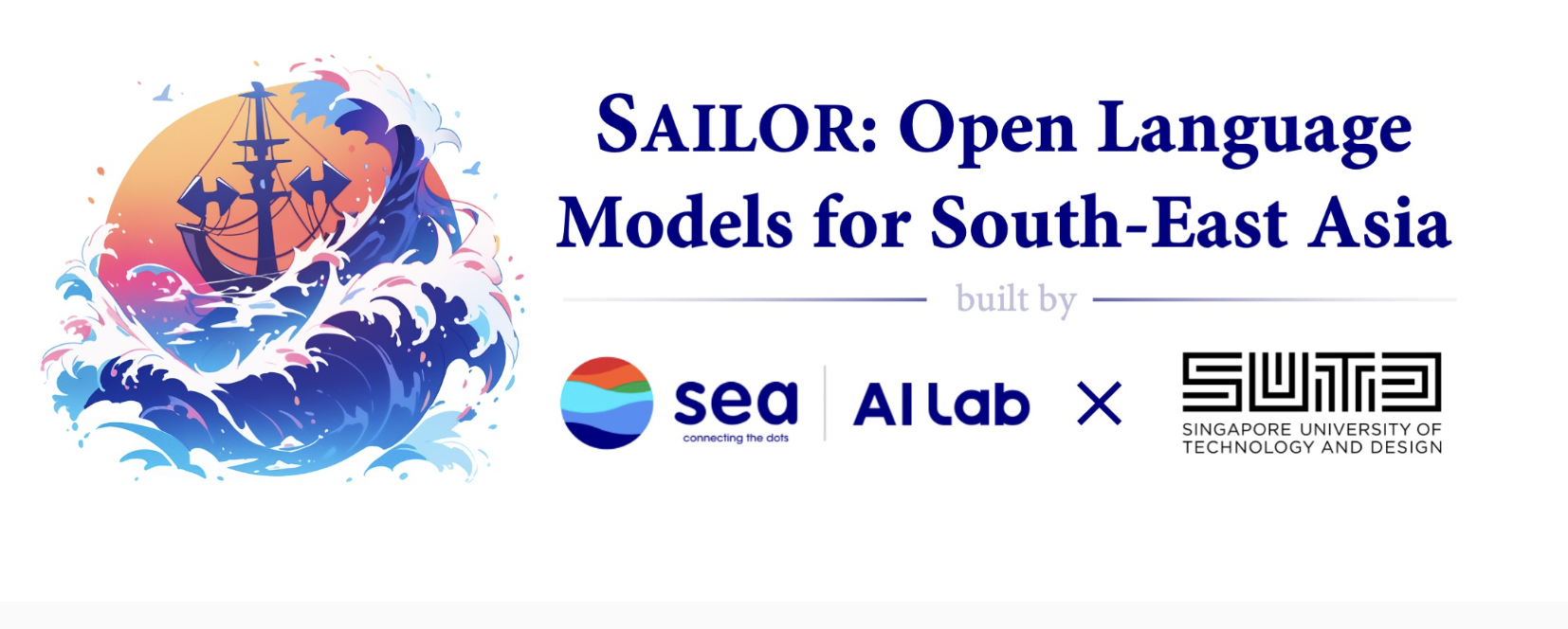Meet Sailor: A Suite of Open Language Models for Bridging Linguistic Barriers in Southeast Asia

In the ever-evolving landscape of computational linguistics, bridging language barriers has led to remarkable innovations, particularly in regions characterized by a rich tapestry of languages. Southeast Asia, with its linguistic diversity, presents a unique challenge for language technology. Traditional models often need help to grasp the nuanced differences and similarities across languages such as Indonesian, Thai, Vietnamese, Malay, and Lao, which significantly hampers their applicability in real-world scenarios.
A team of researchers from the Sea AI Lab and Singapore University of Technology and Design has introduced “Sailor,” an ambitious suite of language models tailored to the linguistic intricacies of the Southeast Asian region. Unlike conventional approaches that might rely on generic, one-size-fits-all models, Sailor distinguishes itself through a meticulous data handling process that includes careful curation, aggressive deduplication, and innovative mixture algorithms. This methodology ensures that Sailor is deeply attuned to the linguistic nuances of the Southeast Asian languages, thereby facilitating more accurate and meaningful text generation and comprehension.
Built upon the robust Qwen 1.5 models, Sailor has been pretrained on an expansive corpus that ranges between 200 and 400 billion tokens, with a deliberate focus on languages from the Southeast Asian region. This extensive pretraining has equipped Sailor with the capability to understand and generate text across a broad spectrum of languages, thereby setting a new precedent in the field of multilingual language technology. The model variants offered by Sailor, ranging from 0.5B to 7B in size, are designed to meet diverse computational needs, ensuring broad accessibility and utility.
The efficacy of Sailor models is underscored by their performance across various benchmarking tasks, a testament to their superior design and implementation. In tasks such as question answering, commonsense reasoning, reading comprehension, and standardized exams tailored to Southeast Asian languages, Sailor models have demonstrated remarkable proficiency. For instance, in the question-answering category, the Sailor-7B model achieved a 57.88% exact match score on the XQuAD (Thai) benchmark, a 60.53% score on TydiQA (Indonesian), and 53.81% on XQuAD (Vietnamese), outperforming its predecessors and establishing new benchmarks for accuracy and reliability.
Sailor’s performance in commonsense reasoning and reading comprehension further exemplifies its advanced understanding capabilities. In the XCOPA benchmark, the Sailor-7B model attained an accuracy of 72.2% across Thai, Indonesian, and Vietnamese tasks, showcasing its adeptness at interpreting and reasoning with complex text. Similarly, in reading comprehension, evaluated through the Belebele benchmark, Sailor-7B’s scores were impressively high, with 44.33% in Indonesian, 45.33% in Vietnamese, and 41.56% in Thai.
In conclusion, Sailor’s introduction is a significant leap forward in the quest for comprehensive language models that can navigate the complex linguistic landscape of Southeast Asia. By combining advanced methodologies with an inclusive approach to language diversity, Sailor addresses the pressing need for tailored language technologies in the region and offers a blueprint for future advancements. The success of Sailor in benchmarking tasks highlights the potential of specialized models in enhancing our understanding and interaction in the field of computational linguistics.
Check out the Github, Models and Blog. All credit for this research goes to the researchers of this project. Also, don’t forget to follow us on Twitter and Google News. Join our 38k+ ML SubReddit, 41k+ Facebook Community, Discord Channel, and LinkedIn Group.
If you like our work, you will love our newsletter..
Don’t Forget to join our Telegram Channel
You may also like our FREE AI Courses….
Nikhil is an intern consultant at Marktechpost. He is pursuing an integrated dual degree in Materials at the Indian Institute of Technology, Kharagpur. Nikhil is an AI/ML enthusiast who is always researching applications in fields like biomaterials and biomedical science. With a strong background in Material Science, he is exploring new advancements and creating opportunities to contribute.


